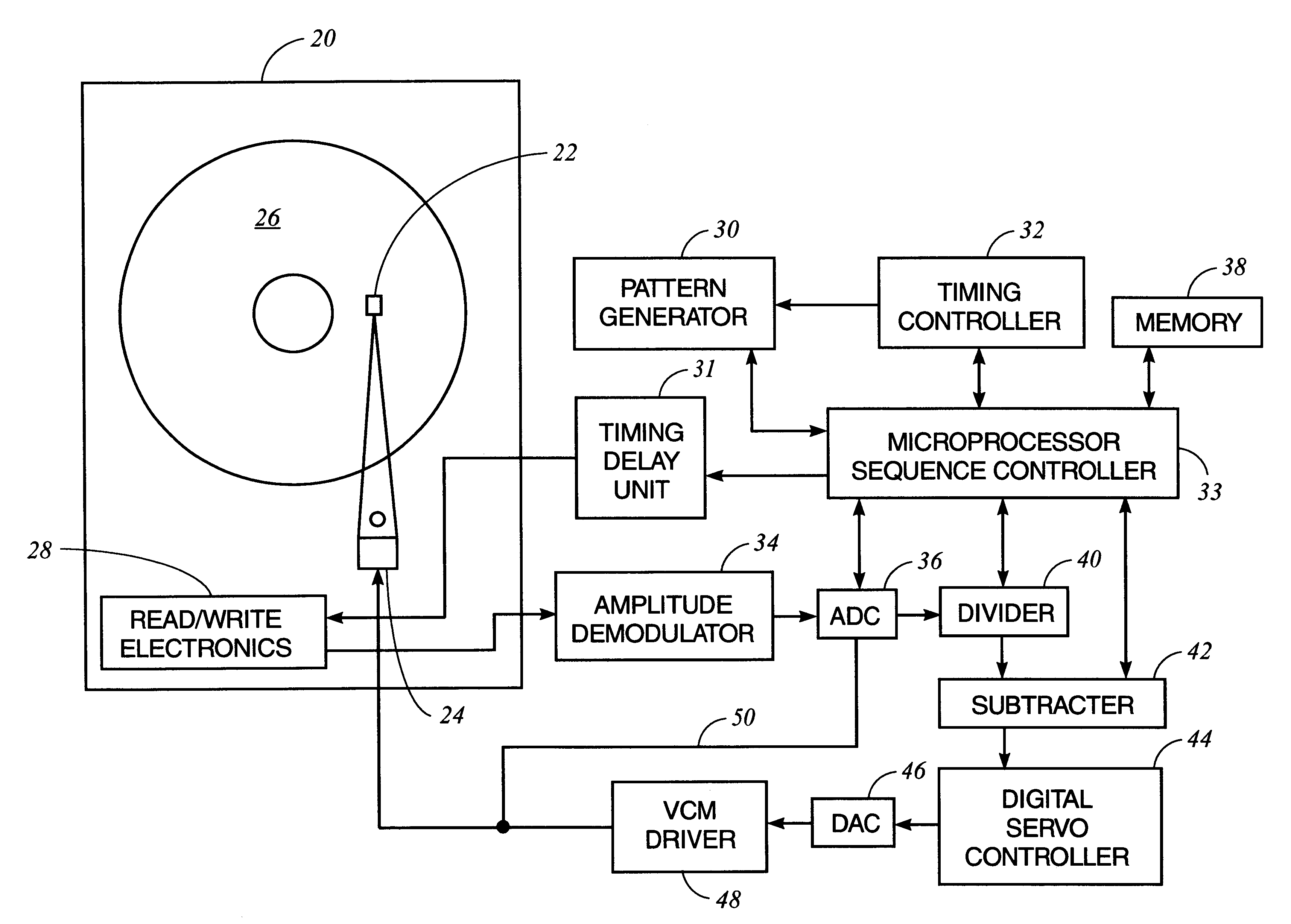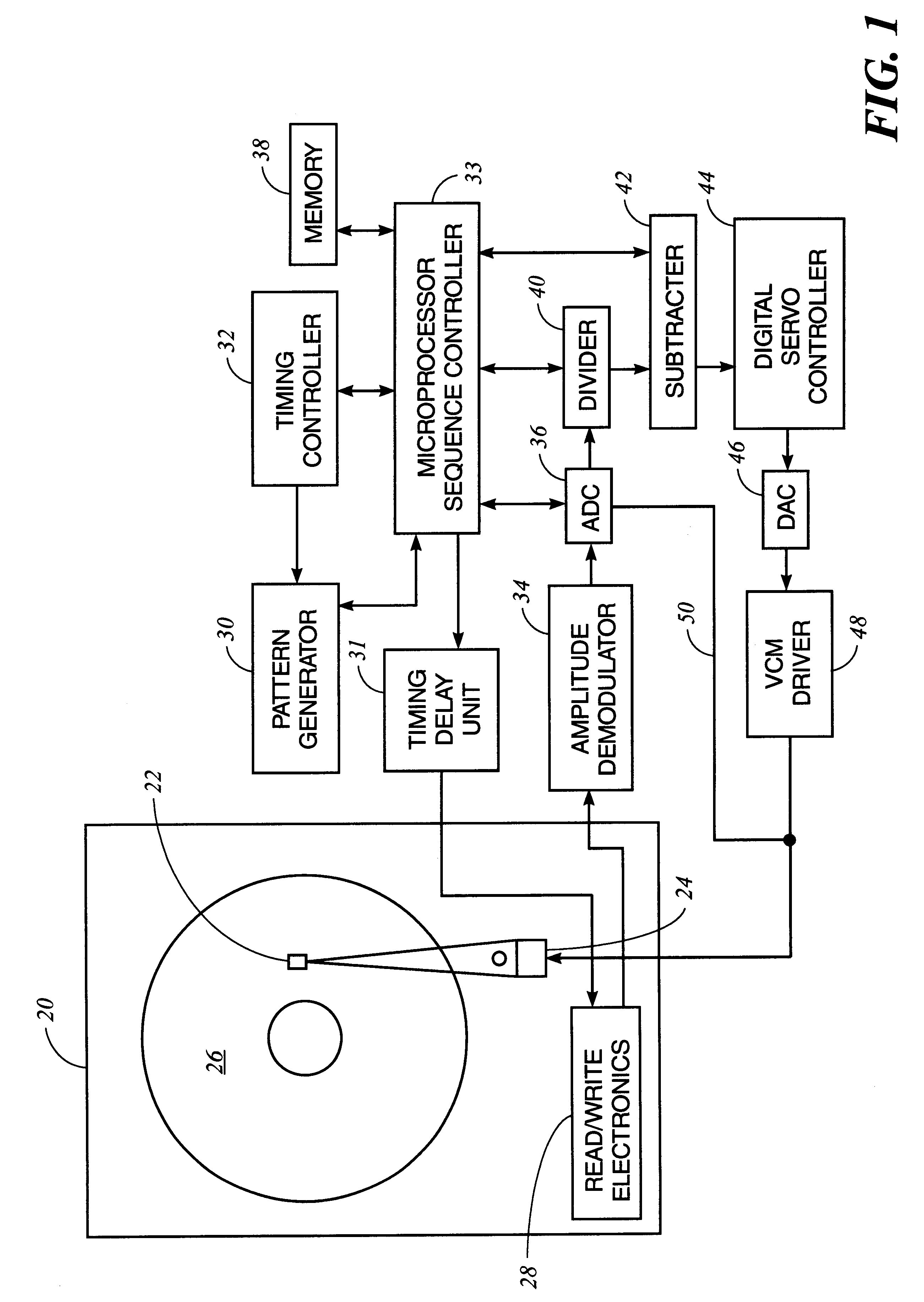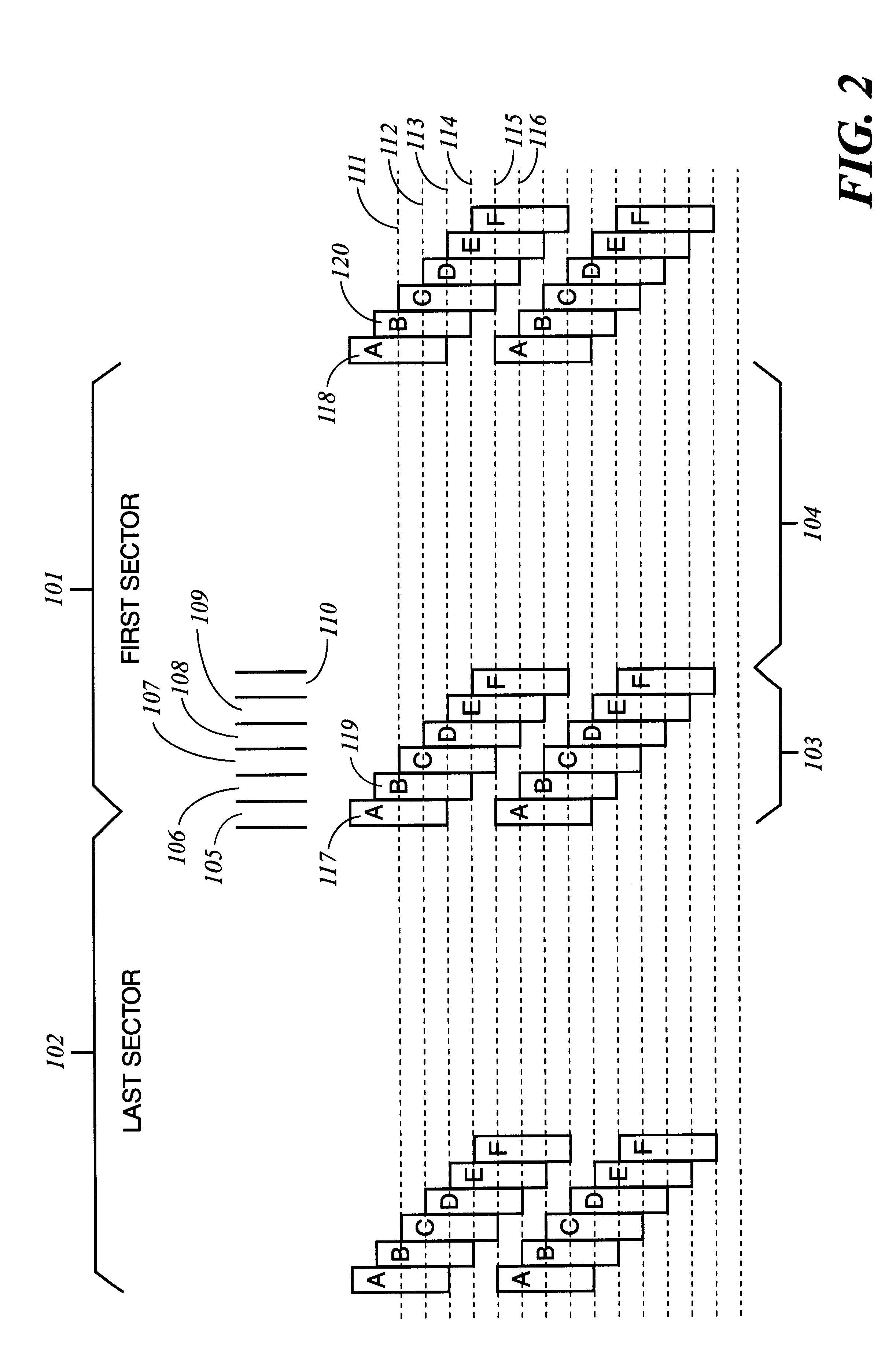Method and apparatus for absolute track spacing determination for self-servowriting
a self-servowriting and absolute track technology, applied in the field of methods, can solve the problems of insufficient traditional servowriting methods, inability to disclose the method of determining absolute track spacing, and becoming more and more difficult for such servowriters to invade the internal environment of the hda for servowriting
- Summary
- Abstract
- Description
- Claims
- Application Information
AI Technical Summary
Problems solved by technology
Method used
Image
Examples
second embodiment
In the self-servowriter, the nominal average reference level is iteratively adjusted using measurements of the gap between tracks (physically separate read and write section and FIGS. 5 & 6), as indicated by the relative amplitude at the midpoint between tracks. In this case, a desired relative amplitude is chosen that is approximately correct for most recording heads, the test tracks are written, the absolute spacing measured, and the adjustment will be applied to the relative amplitude since it controls the actual track spacing. The product patterns will then be written using the adjusted relative amplitude parameter.
The principle of the spacing measurement is as follows. The uniformly spaced tracks provide a "ruler" which are used for measurements of dynamical quantities such as angular acceleration of the actuator arm. Imposing an absolute angular acceleration of the arm by applying a known amount of current to the voice coil motor (VCM) of the actuator calibrates the "ruler" pr...
PUM
| Property | Measurement | Unit |
|---|---|---|
| slot time | aaaaa | aaaaa |
| current | aaaaa | aaaaa |
| torque constant | aaaaa | aaaaa |
Abstract
Description
Claims
Application Information
 Login to View More
Login to View More - R&D
- Intellectual Property
- Life Sciences
- Materials
- Tech Scout
- Unparalleled Data Quality
- Higher Quality Content
- 60% Fewer Hallucinations
Browse by: Latest US Patents, China's latest patents, Technical Efficacy Thesaurus, Application Domain, Technology Topic, Popular Technical Reports.
© 2025 PatSnap. All rights reserved.Legal|Privacy policy|Modern Slavery Act Transparency Statement|Sitemap|About US| Contact US: help@patsnap.com



